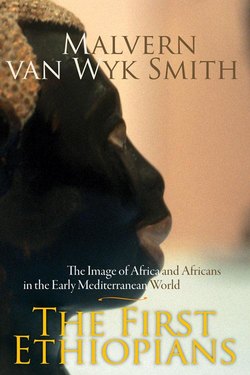Читать книгу The First Ethiopians - Malvern van Wyk Smith - Страница 7
На сайте Литреса книга снята с продажи.
ОглавлениеPREFACE
This book has been some thirty years in the making, although its effective composition could only begin once I had retired from Rhodes University in 2002. Over the previous decades the project had, however, grown substantially from what would have been little more than another identification and dismantlement of reprehensible Eurocolonial prejudices about Africa and Africans from the Renaissance to the nineteenth century. What has emerged instead is the more ambitious quest, in Egyptian, classical and early Christian traditions, for the origins and earliest manifestations of the Mediterranean world’s founding conceptions of – and prejudices about – the subcontinent to the south of the Sahara.
During the years that I pondered this theme and amassed the evidence, many debates have risen and sunk in the (at times) superheated polemics of postcolonial and postmodernist debate. In the Introduction, I chart my own way through these minefields of cultural history in order to explain why the main study that follows has taken the shape and directions it has. Readers not interested in the convolutions and clashes of postcolonialist and cultural discourse should feel free to skip the Introduction and to enter the argument with Homer and the ancient ‘Ethiopians’ in Chapter 1.
Over three decades, I have incurred many debts, to friends and colleagues, as well as to funders and institutions, and I must here attempt to pay tribute to them. Two of my former mentors and colleagues, the late Guy Butler (Rhodes University) and the late Aldon D. Bell (University of Washington) in the 1970s planted the first ideas that have now come to fruition. They would be surprised by the outcome, but not, I hope, disappointed. At Cambridge in the 1980s, I had the pleasure of meeting W.H.C. Frend, doyen of authorities on early Christian North Africa, and to him I am indebted for setting my mind in the directions pursued in Chapter 11. Since the 1970s, several colleagues at Rhodes have continued to contribute to my contemplations of the images of Africa, among them Gareth Cornwell, Dan Wylie, Paul Walters, Warren Snowball, and the late Don Maclennan, and I thank them here.
However, the major endeavour in the research, preparation and composition of a study such as this is largely a solo affair, and I owe large debts to an array of institutions that provided the funds and opportunities for hundreds of hours of reading, thinking and shaping of ideas. In South Africa, I am indebted to Rhodes University and the former Human Sciences Research Council’s Centre for Scientific Development (now the National Research Foundation) for several research and travel grants over the years. I also wish to thank Rhodes for the Vice-Chancellor’s Distinguished Senior Researcher’s Award in 1999, and the Ernest Oppenheimer Memorial Trust for a substantial travel scholarship in 2002.
I owe much appreciation and thanks to the Principal and Fellows of Wolfson College, Cambridge, who in 1984 and again in 1993 elected me to a Visiting Scholarship, as well as to Girton College, Cambridge, whose Mistress and Fellows in 1985 awarded me the Helen Cam Fellowship. I must also thank the British Council for the award of a travel grant in 1984, and Erhard Reckwitz and the University of Essen for a travel and residence grant to attend the Essen Symposium in 1998. Some of the central ideas developed in this study were first aired in seminars and discussions in London, Oxford, Cambridge and Essen, and I am grateful for many helpful suggestions and clarifications that came out of these conversations.
Research libraries are the quarries from which any study of this kind must draw its ore, and I am beholden to several. To the directors and librarians of the following institutions, I extend my deepest thanks for their assistance and many kindnesses over the years: the British Library, the Bodleian Library, the Cambridge University Library, the Royal Commonwealth Society Library (whose holdings are now in Cambridge), the Strange Africana Collection (Johannesburg Public Library), the South African Library and the Library of Parliament (Cape Town), Rhodes University Library (and here especially Viv Botha and Sue Rionda), the Grahamstown Public Library, and the Africana Collection of the Port Elizabeth Public Library.
I am deeply grateful to Wits University Press, notably Veronica Klipp, Estelle Jobson and Julia Wright, as well as to Electric Book Works, particularly Arthur Attwell and Silma Parker, for easing this book into the world in a competent and ever-helpful manner. I also wish to thank the editors, Helen Moffett and Rustum Kozain, for their meticulous attention to the text, and Ethné Clarke for proofreading. To the three anonymous readers whom the Press originally commissioned to consider the manuscript, I am indebted for wise suggestions and timely corrections. Over the years several secretaries in the Rhodes Department of English (Jennifer Holmes and Carol Booth), as well as secretarial assistants (Pat Papenfus and Virginia David-Engelbrecht), have worked small miracles with word processors, and I remain very grateful to them.
While acknowledging all the assistance that I have received from funders, institutions and many individuals over the years, and as I thank them for their guidance and generosity, I nevertheless accept full responsibility for all conclusions drawn and opinions expressed (including any remaining errors and obscurities) in the following study.
Without the love, enthusiasm, and support of my wife over many years, particularly at times when the project seemed to be adrift in the shallows, this book would not now be before the reader. So it is with much relief, joy, and gratitude that I dedicate it to her – Rosemary Ann.
M. van Wyk Smith, Grahamstown, September 2009
